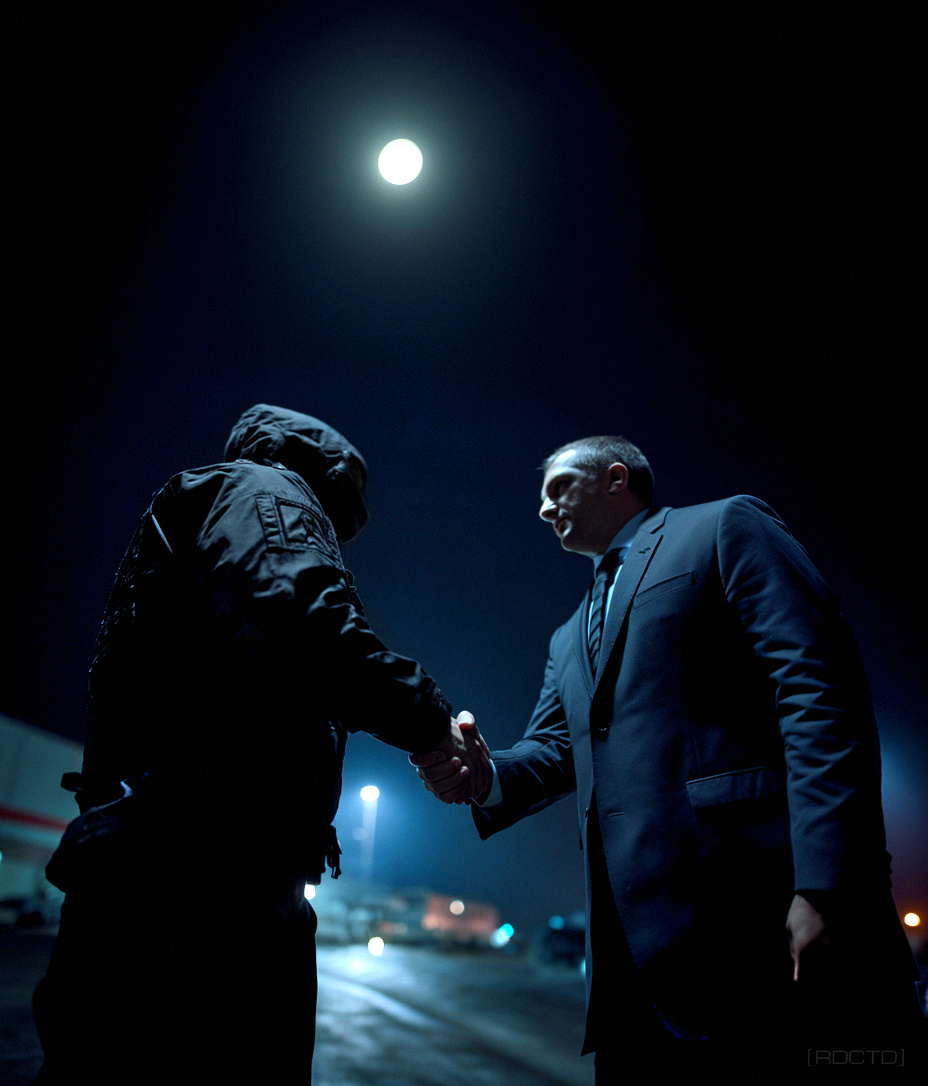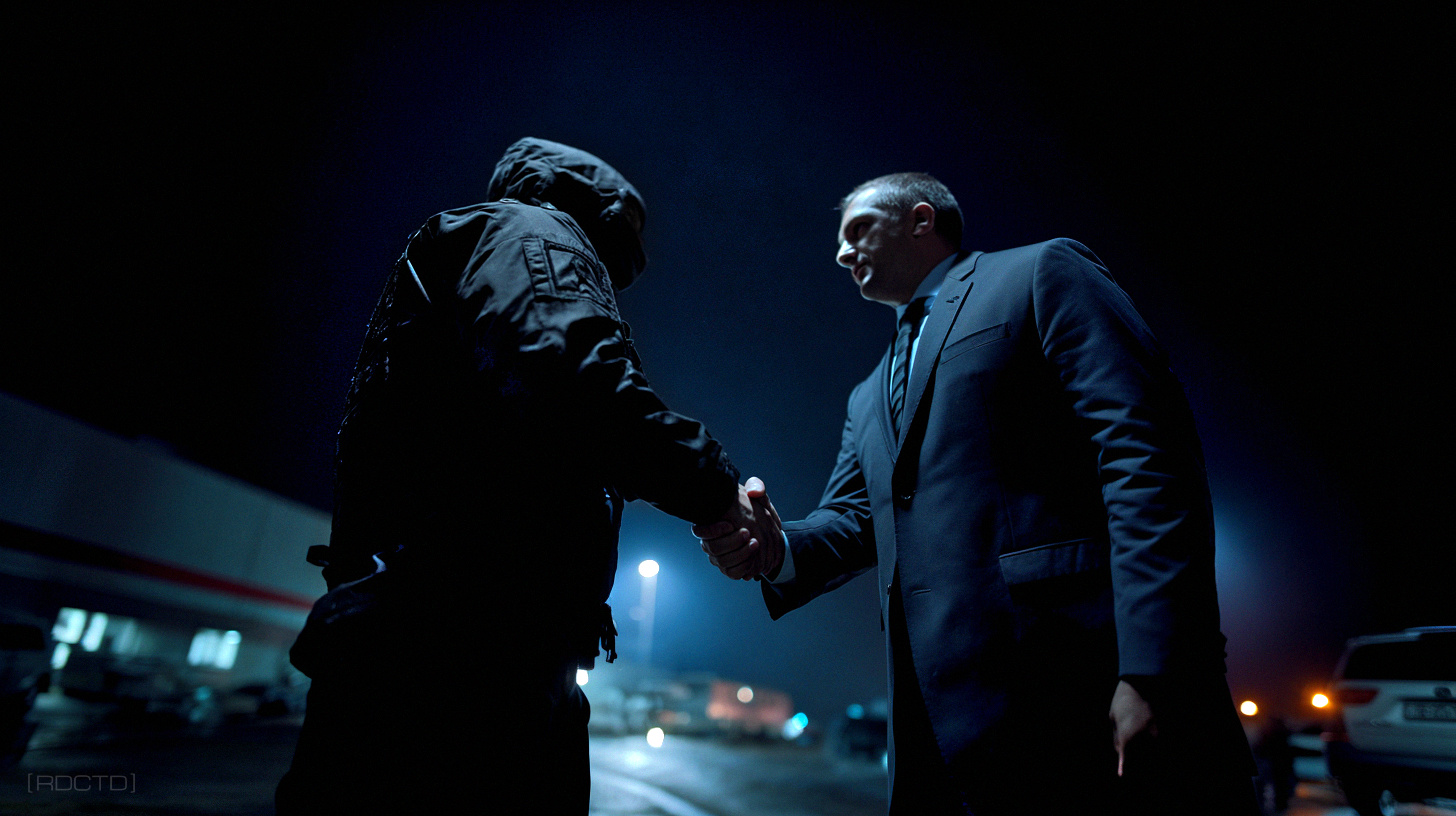 The tradecraft technique of assessing an individual’s threat level and imminence from a handshake. A discreet read using subtle social and tactile cues into a quick, low-profile judgment of capacity and intent.
The tradecraft technique of assessing an individual’s threat level and imminence from a handshake. A discreet read using subtle social and tactile cues into a quick, low-profile judgment of capacity and intent.![]()
Prime Your Baseline // Spend ten seconds scanning the room before contact so the handshake rides on context, anomalies pop only against a known normal. Priors make for clean reads.
![]()
A handshake is a micro-interaction you’ll treat as a kinesthetic and behavioral assay – one more sensor in your tradecraft stack, not a verdict. You’re sampling two variables under social cover – capacity (strength/control) and intent/imminence (hostility now or later). Respect cultural norms, context, and confounders (injury, occupation calluses, temperature, nerves).
Don’t over-index on any single cue and don’t physically telegraph that you’re assessing, with your affect remaining cordial. This is probability work, not mind-reading. You’ll convert tactile data (grip, rotation, cadence, sweat, tremor) and concurrent signals (space control, gaze, micro-expressions, breath) into a fast, repeatable judgment that feeds your broader threat picture.
An operative harvests real signal in ~3 seconds, preserving rapport while quietly mapping strength vs threat before the conversation even starts.
![]()
Prime Your Nervous System Before Entry // A slow nasal inhale and soft jaw give you tactile sensitivity without signaling tension, steadying micro-motor control and keeping your pulse, breath, and grip under quiet command before contact.
![]()
[ I ] FRAME THE ASSESSMENT
![]()
Open with the mission lens as greeting while gathering. The goal is to turn a routine social ritual into a controlled sampling window. Think of it as a micro-ISR pass under full cover, run the same way every time so you can compare reads across targets and settings. Every repetition refines your pattern recognition, sharpening your ability to separate real signal from social noise.
![]()
• Own your mechanics, the body quiet and mind structured. Your off hand free, and your field of view wide – you’re collecting, not dueling.
![]()
You’re judging two things in the span of a handshake: ‘Capacity’ (how strong/able the individual is) and ‘Intent/Imminence’ (whether they pose a threat now). Treat this as structured tradecraft, fast, and repeatable.
Use a mental two-axis: ‘Strength’ (low→high) vs ‘Threat’ (benign→imminent).
Your sample size is minimal, so anchor on observable, mechanical signals first, then layer physiology and micro-behavior. Time-budget it: ~0.5 s approach, ~1.5 s contact, ~0.5 s release, ~1.5 s post-contact read.
![]()
• Keep your grip neutral, elbow tucked, and stance bladed so your read isn’t contaminated by your own force. Clean inputs yield clean outputs.
![]()
Close this frame by committing to a repeatable loop: observe → feel → score → decide. Don’t let charisma or bias override mechanics. This isn’t to diagnose character, it’s for updating a threat picture.
![]()
Track Handedness // By forearm development, watch position, and dominant-side micro-movements. It forecasts which arm they’ll anchor with if control or aggression follows.
![]()
[ II ] PRE-CONTACT CUES
![]()
Before skin contact, you already own much of the signal. Approach, spacing, and carriage tell you how the target moves, respects boundaries, and manages arousal. Treat this as your baseline, the grip only refines it. Note what’s normal for the environment so deviations stand out.
![]()
a) Approach Vector & Footwork: A straight, brisk line with balanced foot placement suggests athletic coordination and training. Shuffling steps, narrow base, or toe-out/varus knees may indicate poor balance or injury – lower immediate capacity. Watch for weight carried over the balls of the feet with quiet footfalls – often correlates with combatives background.
b) Space Management: Early entry into your intimate zone without a social pause indicates boundary testing. Pair with chin elevation or chest inflation for dominance signaling. A consistent half-step offset (not square) and a slight shoulder lead often maps to someone comfortable initiating clinch/control.
c) Arm Carriage: Elbows close, forearms relaxed at beltline is neutral. Elbows flared, wrist already pronated (palm slightly down) predicts a dominance hand orientation on contact. Hands hidden, then flashed late, can indicate concealment or uncertainty; also watch for garment clearing motions.
d) Physiology at Range: Facial color, neck vasculature, and breathing rate matter. A rapid alar flare, visible swallow, or pulsatile temple suggests adrenergic load; could be stress, could be pre-action arousal. Note baseline before the hands meet.
![]()
Bank these pre-contact tells and don’t chase any single cue. You’re building a prior for capacity and state that the handshake will confirm or challenge. If the baseline already pings high, shift your stance and options early. Let the contact phase validate the trend.
![]()
Delay Your Hand’s Closure by a Beat // If they rush contact – just enough to watch intent surface. The pause reveals whether they seek dominance, control, or simple eagerness.
![]()
[ III ] HANDSHAKE MECHANICS
![]()
Now you’re on the sensor. The handshake becomes an instrument – translating muscle tone, tempo, and micro-pressure into usable data. You’re reading control, not contesting it. Maintain your own neutrality – grip, breath, and stance steady – so the signal stays pure and your read untainted.
![]()
Grip Metrics
![]()
Rotation & Alignment
![]()
Vectoring & Micro-Steer
![]()
Cadence & Duration
![]()
Surface Diagnostics
![]()
Tremor & Stability
![]()
![]()
* Package the feel into simple buckets – controlled, chaotic, or performative. Map any steering or pressure games to intent, not ego. Don’t answer dominance with dominance – answer it with distance and options. The point is information, not a superficial “win”.
![]()
After Release // Note any subtle shake-out, flex, or wrist roll. Those recovery gestures show residual tension and tell you how much strength or emotional load they burned in the exchange.
![]()
[ IV ] BODY LANGUAGE
![]()
Touch doesn’t silence the eyes. As palms connect, vision stays active – tracking gaze, facial tone, and posture. You’re matching tactile data with autonomic tells to separate tension from threat. The read is cross-modal; what you feel in the hand must align with what you see in the body.
![]()
Ocular Signals
![]()
Facial Ticks & Microexpressions
![]()
Head & Shoulder Set
![]()
Vocal and Respiratory Overlays
![]()
Olfactory & Chemical Hints
![]()
![]()
* If the face says calm but the body hunts angles, weight the body. Prioritize cues that are hard to fake and easy to repeat. Mark any cluster that suggests boundary testing plus action planning. That’s your early flag for imminence.
![]()
Map Callus Placement // By gliding your thumb pad. The spread shows how the hand’s used – grip patterns, strike zones, or tool wear – revealing function more reliably than thickness.
![]()
[ V ] SCORING MODEL
![]()
Raw intuition drifts, structured scoring keeps you stable under tempo and uncertainty. Use a compact rubric – fast, repeatable, and secure. Favor clarity over precision. Make quick, defensible calls on strength and threat, using only a few clear categories and thresholds you can trust when adrenaline spikes.
![]()
Use a simple “G.R.I.P.E.” checklist, each 0–2 points. Cap at 10. Track ‘Strength’ (S) as the sum of G+R+I; track ‘Threat’ (T) as E plus any dominance/space violations (+0–2).
![]()
G – Grip Quality: closure speed, peak force, modulation. (0 weak/chaotic, 1 moderate/uneven, 2 strong/controlled)
R – Rotation Control: palm orientation, steering attempts. (0 appeasing, 1 neutral, 2 dominant/manipulative)
I – Inertia/Stability: arm steadiness, vectoring, micro-steer. (0 floppy, 1 minor vectors, 2 purposeful control)
P – Physiology: temperature, sweat, tremor, breathing. (0 baseline, 1 elevated but contextual, 2 adrenergic + scanning)
E – Environmentals/Ethology: approach, spacing, gaze, microexpressions. (0 cooperative norms, 1 boundary testing, 2 predatory tells)
![]()
Interpretation Matrix
![]()
Translate the score into posture, distance, and tasking – beyond a mental note. If the number moves with context, let it, the model serves the mission. Log the result after the contact to train your eye-hand link.
![]()
If You Register Tremor // Glance at the feet. Still feet with high hands signal composure and control, restless feet under the same show intent to act.
![]()
[ VI ] RELEASE PHASE
![]()
Most operatives stop reading after the squeeze, don’t. The release exposes control impulses and hidden preparation. Watch how the break happens, where the hand travels, and what the next two seconds reveal – this is your verification window, not your exit.
![]()
a) Release Compliance: Do they let go on your first cue? A delayed release or re-grip is a control behavior; pair with foot advance = higher imminence.
b) Hand Return Path: A smooth return to neutral with shoulders decompressing is cooperative. Hovering hand, partial garment clear, or forearm staying “live” at midline suggests readiness.
c) Post-Contact Glance Map: Immediate eye darts to your hips, your companions’ hands, or exit geometry indicate action-planning. A downward glance to your handshake hand can signal evaluation for weakness or future leverage.
d) Your Posture Probe: After release, make a micro step to your outside gate and open your angle 10–15°. Note if they mirror, block, or re-enter. Resistance to your angle change is the cleanest kinetic tell of control intent.
![]()
Decision Matrix
![]()
• Don’t let the handshake be your only data point. It’s a lens, not a verdict.
![]()
Finish by acting on the read. Adjust your angle, set a blocker, or steer to rapport – whatever the matrix demands. Don’t relitigate the handshake once you’ve decided – move to position and prevail. Then document and debrief so the next read gets easier and cleaner.
![]()
Pair Handshake Timing With Speech Onset // Those who speak before releasing are asserting dominance or frame control, those who wait until after release tend toward deference.
![]()
[ FINAL ]
![]()
That’s the field routine. It’s fast, technical, and consistent with covert operations etiquette – you’re reading mechanics, not making character judgments. Train it until it’s automatic and works with other read tactics, then you’ll get a reliable threat snapshot from the most ordinary greeting.
![]()
// A handshake can reveal critical target data – the hand gives you facts, the face gives you context, the feet give you intent.
[INFO : Instinctive Threat Detection]
[OPTICS : Budapest, Hungary]
![[RDCTD]](https://rdctd.pro/wp-content/uploads/RDCTD-Covert-Operative-Tradecraft-Guide-LOGO-tk.png)
![[RDCTD]](https://rdctd.pro/wp-content/uploads/RDCTD-Covert-Operative-Tradecraft-Guide-LOGO-mobile.png)



